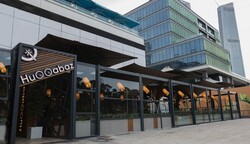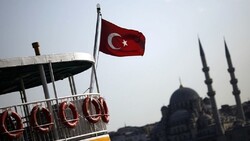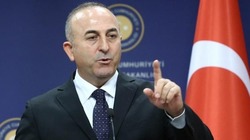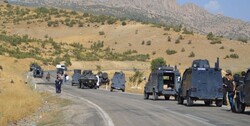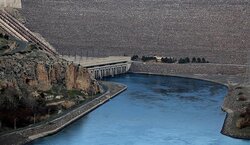Turkey questions the wisdom of having an all-American air force
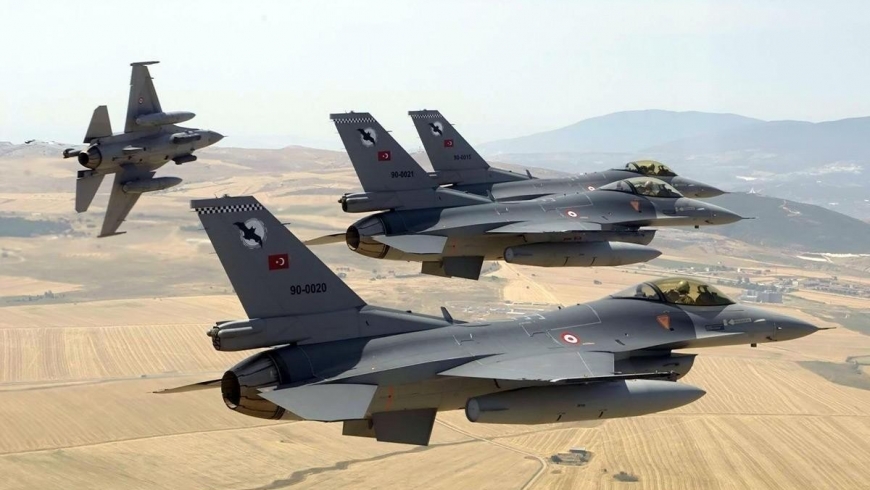
Shafaq News/ Aside from having the second-largest army in NATO, Turkey also operates the third-largest fleet of U.S.-built F-16 fighter jets in the world. However, unlike many U.S. allies in the wider region, it does not have any French or British jets, making it heavily reliant on the United States, a state of affairs some Turks have begun to question and scrutinize.
Cagri Erhan, Turkish President Recep Tayyip Erdogan’s security and foreign policy advisor, brought up the iconic fighter jets several times in January. For example, he tweeted on Jan. 20 that Turkey doesn’t need any more F-16s and even dubiously claimed that the aircraft is not even among the top 10 best fighters in the world.
Erhan later expressed similar sentiments in a Jan. 28 television interview. He questioned why Turkey does not operate any non-American fighter jets. He claimed that Ankara did not turn to other NATO countries for any different fighter types over the decades since its pilots had received specific training for the F-16.
Turkey has received 270 F-16 Block 30/40/50 models since first acquiring the type in 1987. This enormous fleet constitutes the backbone of its air force. Turkey is presently seeking 40 advanced Block 70 F-16s and 79 modernization kits from the United States as part of a proposed $20 billion deal to keep this fleet up-to-date until it can acquire or develop fifth-generation fighters.
Erhan’s comments coincide with recent negotiations between Turkey and the United Kingdom over a potential Turkish acquisition of 24-48 Eurofighter Typhoons, among other things. Acquiring Eurofighters would signal that Turkey aims to lessen its dependency on the U.S. for fighters as it continues exponentially expanding its burgeoning domestic arms industry.
Ankara hopes the fifth-generation stealth fighter it is developing, the TAI TF-X, enters service by the 2030s. Development of the TF-X has become increasingly essential since Turkey was banned from buying any fifth-generation F-35 Lightning II stealth jets in 2019 after it acquired advanced S-400 air defense missile systems from Russia.
Even a cursory look at the air forces of other U.S. allies in the Middle East, and neighboring Greece, shows that Erhan’s observations are not wholly unfounded.
Greece operates a sizable fleet of F-16s, the bulk of which is being upgraded to the advanced Block 72 standard. Athens also bought a substantial number of French warplanes, first acquiring the Dassault Mirage 2000 in the late 1980s. It recently ordered 24 Dassault Rafale F3R jets from Paris and has plans to buy more American warplanes, with a potential F-35 acquisition under discussion.
Israel fields the world’s second-largest fleet of F-16s, second only to the United States. Unlike Turkey, Israel didn’t always have an air force of predominantly American-built jets. France was Israel’s main arms supplier before 1967, and the Israeli Air Force operated various Dassault fighters, eventually building its version of the French Mirage 5, the Kfir. Subsequent plans to build an indigenous fourth-generation jet resembling the F-16, the Lavi, in the 1980s fell through, and the backbone of Israel’s fighter fleet has consisted of U.S.-supplied F-15s, F-16s, and now F-35s.
The Israeli arms industry made substantive modifications and upgrades to these aircraft, including the F-35s, creating distinctive Israeli variants in the process. In January, Israel officially requested to buy 25 of the new F-15EX fighters, again underscoring how it remains a leading operator of advanced American jets.
Forty-three F-16A and F-16B Fighting Falcons form the backbone of the Royal Jordanian Air Force. The kingdom recently ordered eight modern Block 70 F-16s to modernize this fleet. While Jordan, like Israel, operates an all-American fighter fleet, it also previously possessed French jets, namely the Dassault Mirage F1 that it acquired in the 1980s. Those jets are now retired. Today, Jordan only operates F-16s and will most likely continue to do so for the foreseeable future.
The island kingdom of Bahrain similarly relies heavily on F-16s for its modest air force, with 17 F-16C variants currently in service and 16 new Block 70s on the way. On the other hand, Manama also has a tiny fleet of six British BAE Hawk jet trainers.
All other U.S. allies in the region notably have much more diverse arsenals.
Iraq acquired 36 F-16 Block 60 jets from the U.S. in the 2010s, supplemented by 24 South Korean-built T-50 jet trainers. Now, Baghdad is turning to France for 14 Rafales, indicating it seeks a mixed fleet. Iraq has historically pivoted between east and west for its fighter jets.
The backbone of Saudi Arabia’s fighter fleet consists of 84 advanced F-15SA (Saudi Advanced) acquired as part of a landmark $60 billion arms deal signed in 2010. Still, despite buying enormous numbers of advanced American jets, Riyadh also operates a sizable fleet of Eurofighter Typhoons built by Britain, ensuring it is not solely reliant on the U.S. for advanced fighters.
The United Arab Emirates (UAE) also operates a diverse fleet of American and French warplanes and clearly wants to keep it that way. It purchased 30 advanced French Mirage 2000-9 jets in the late 1990s shortly before its historic acquisition of 80 F-16E/F Block 60 jets, a variant tailor-made exclusively for its air force that was even more advanced than F-16s flown by the U.S. Air Force at that time.
In January 2021, Abu Dhabi reached another landmark deal with the U.S. for 50 F-35s and 18 MQ-9 Reaper drones for $23 billion. However, the UAE suspended the deal the following December, citing “onerous” U.S. preconditions. That same month it signed another record $19 billion deal with France for 80 advanced Rafale F4s. By doing so, Abu Dhabi once again demonstrated how it diligently aims to avoid becoming wholly reliant on any one country for fighters.
Kuwait operates U.S. F/A-18 Hornets and Eurofighters. It has ordered 28 advanced Eurofighter Tranche 3 jets from Italy and 28 F/A-18E/F Super Hornet Block 3 jets from the U.S., clearly indicating how it wishes to continue flying an equal number of both types.
Oman flies the Eurofighter and the British BAE Hawk 200 along with its F-16s.
When pre-revolutionary Iran was a U.S. ally under the reign of the last Shah, it only bought American jets, most notably becoming the only other country to operate the iconic F-14 Tomcat. Nevertheless, at one stage, the Shah warned that he would turn to Britain for the Nimrod plane when Washington was reluctant to sell Iran E-3 Airborne Warning and Control System (AWACS) aircraft.
Post-1979 Iran has mostly sought out jets from Russia. It bought a modest fleet of MiG-29A Fulcrums from Moscow in 1990 as part of the largest post-1979 arms deal Tehran ever made. Today, Iran is reportedly acquiring 24 Russian Su-35 Flanker-E fighter jets, likely as a form of payment for the hundreds of drones it has been supplying Russia for use in the ongoing Ukraine war.
Analysts had previously suggested that Tehran would be better off buying a mixture of Russian Sukhois and Chinese 4.5-generation Chengdu J-10Cs. The Chinese J-10C has a more competitive price tag and advanced radar than the Su-35. However, China has reportedly proven reluctant to accept oil as a form of payment for its jets.
The 1979 Egypt-Israel peace treaty saw Egypt pivot from the Soviet Union to the United States for the bulk of its military hardware. Cairo gradually built up the fourth-largest F-16 fleet in the world. Nevertheless, it resented that the U.S. refused to supply it with long-range AIM-120 AMRAAM air-to-air missiles or sell it F-15s.
Egypt has periodically sought to lessen its heavy dependency on the U.S. for jets. In 1981, it became the first foreign country that bought the Mirage 2000 but only bought 20. In 2015, it also became the first foreign buyer of the Rafale F3R when it ordered 24. In 2021, it ordered an additional 30. Incumbent Egyptian President Abdel Fattah el-Sisi also turned to Russia in the 2010s to further diversify his military. He bought, among other things, a fleet of 48 MiG-29M/M2s.
When Egypt sought Su-35s in 2018, Washington warned it could fall afoul of its Countering America’s Adversaries Through Sanctions Act (CAATSA) law introduced the year before. CAATSA, as the name suggests, imposes sanctions on buyers of Russian military hardware. It seems Egypt has discreetly dropped that deal, with the Su-35s Moscow built for it instead reportedly being diverted to Iran. Furthermore, the U.S. has suggested it might soon relinquish its decades-old ban on selling Egypt F-15s, which could further incentivize Cairo to reduce defense ties with Moscow.
Turkey may wish it had taken similar steps to at least partially diversify its fighter fleet in recent decades. If it pushes ahead with the proposed Eurofighter deal, that would signal that it is finally beginning to take steps in this direction. And if the $20 billion F-16 deal is blocked, which is a real possibility given the firm opposition from Congress, expect more Turks to follow Erhan in questioning the wisdom of relying so heavily on the United States for fighter jets when so many neighboring and regional countries have successfully avoided doing so.
(Forbes)
